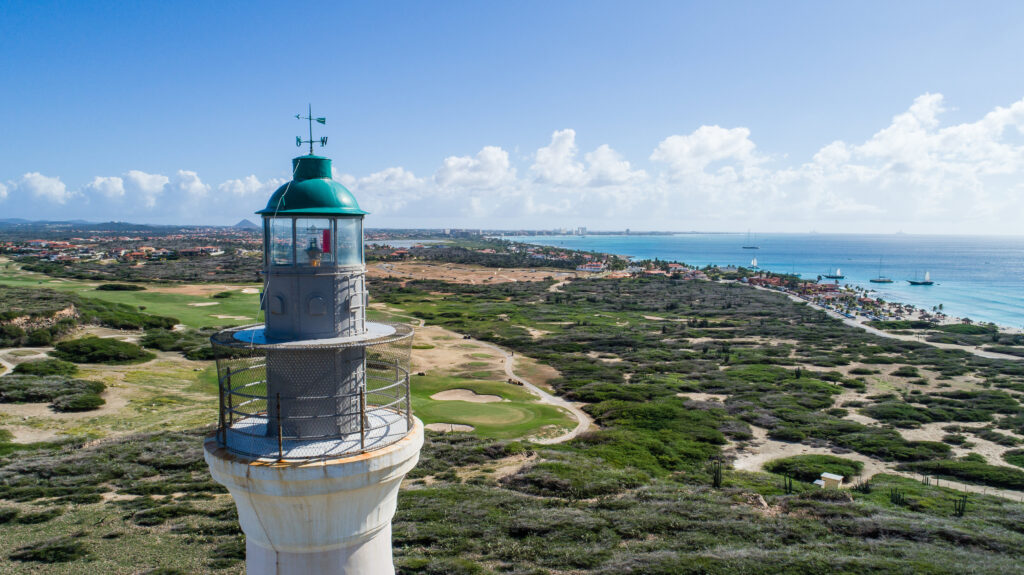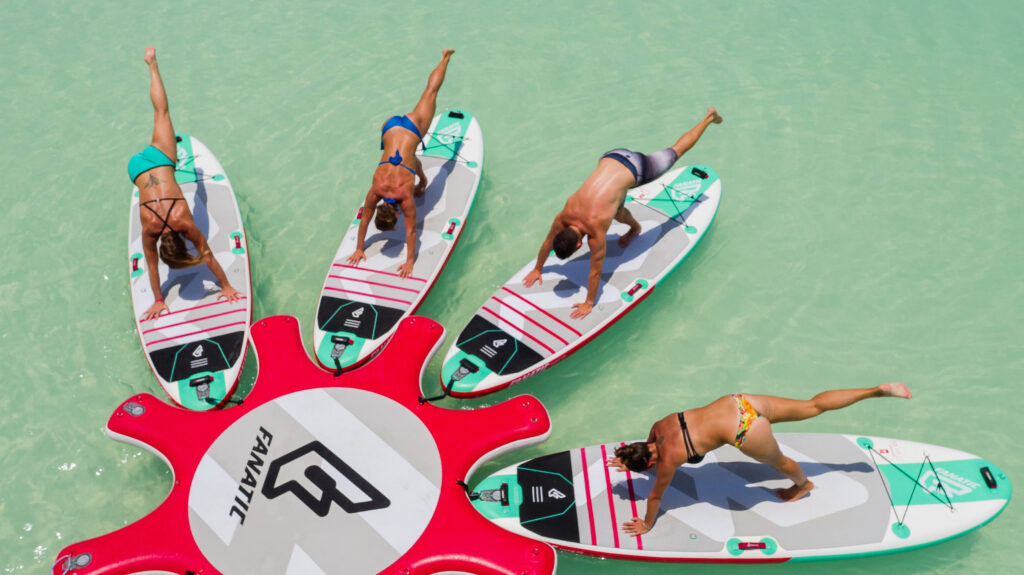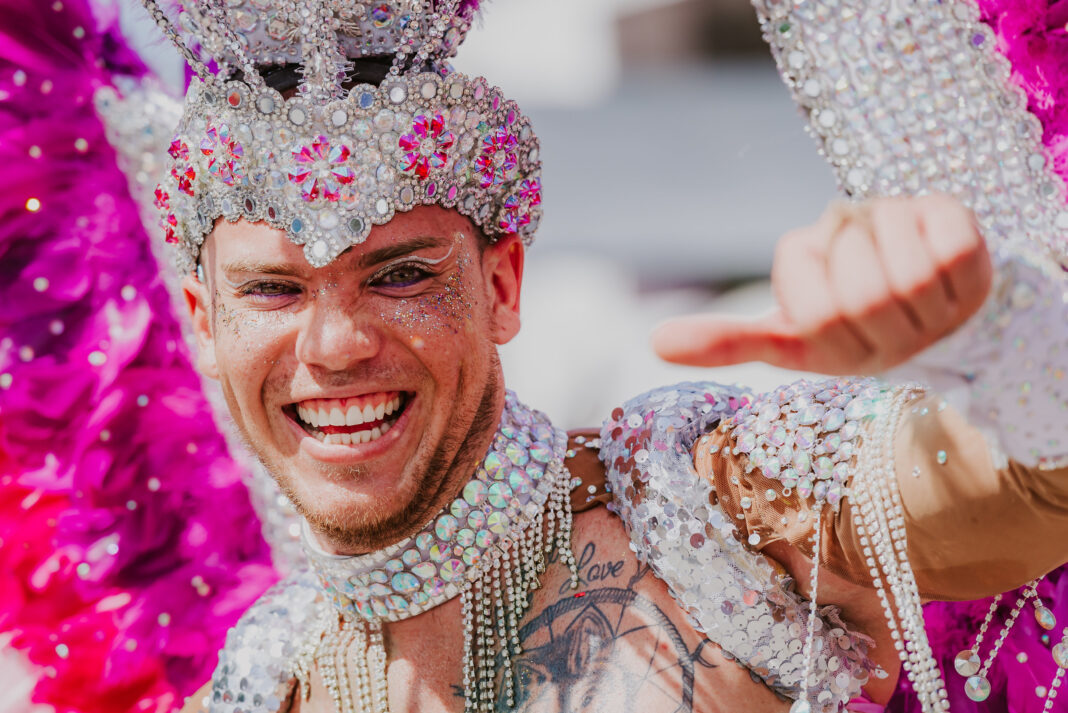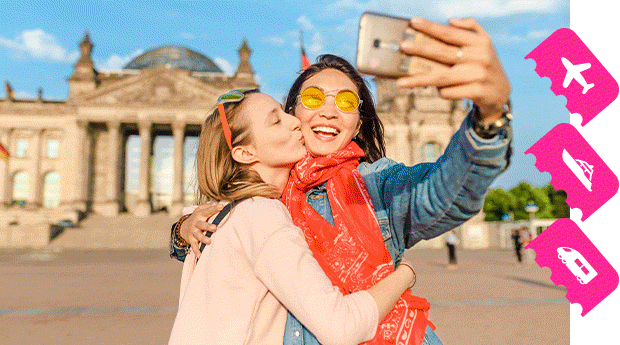For people of a certain age, the word “Aruba” conjures memories of “Kokomo,” the Beach Boys song that lists off Caribbean destinations perfect for romance and escape. “Afternoon delight/ Cocktails and moonlit nights/ That dreamy look in your eye/ Give me a tropical contact high.”
Those amorous images are actually helpful when thinking about the destination—even for LGBTQ2S+ people. Aruba, officially a constituent country within the Kingdom of the Netherlands since seceding from the Dutch Antilles in 1986, is an outlier compared to some other Caribbean countries when it comes to its attitudes toward LGBTQ+ rights.

Its close ties with the Dutch has given the island of 107,000 people a cosmopolitan worldview. The country does not prohibit same-gender sexual activity and in 2012 passed anti-discrimination laws. Though it has not legalized same-gender marriage, it recognizes marriages performed in the Netherlands and in 2021 legalized civil partnerships that include same-gender couples. The result is that Aruba is commonly referred to as one of the most queer-friendly and progressive islands in the Caribbean.
So, what can you expect on a visit to Aruba, which is about 29 kilometres north of the Venezuelan coast, a mere five-hour flight from Toronto? What is LGBTQ Aruba like?

There are inviting white sand beaches, and cooling trade winds have sculpted the trees, so they all point to the southwest. There are the sounds of the island’s residents speaking Dutch, English, Spanish and the local dialect, Papiamento. There are the boldly painted buildings—shades of pinks, reds and yellows.
And then there is the ability to walk safely hand-in-hand with your partner through the capital city, Oranjestad, and pretty much anywhere else on the island without concern. There is a reason why Aruba’s motto is “One Happy Island.”
What to do
Fort Zoutman Historical Museum (Zoutmanstraat at the corner of Oranjestraat, Oranjestad). This former military base, the oldest building in the capital, was built by African slaves starting in 1796. The museum contains artifacts tied to Aruba’s past, including a replica kitchen in the courtyard that shows how islanders used to prepare meals. The fort plays host to the island’s weekly Bon Bini Festival of music, folkloric dancing and cuisine.
National Archaeological Museum Aruba (Schelpstraat 42, Oranjestad). Chronicling more than 3,500 years of habitation on the island, the museum’s collection includes ceramic shards, shell and stone tools, and ornaments from the earliest people who first came to Aruba from the South American mainland, and later Indigenous cultures like the Arawak.
A popular cruise ship destination and annual vacation spot for Dutch nationals, Aruba has no shortage of shopping. Steps from the waterfront in Oranjestad you will find several shopping centres, including the Royal Plaza Mall (Lloyd G. Smith Blvd. 94, Oranjestad), which is home to international brands like Tommy Hilfiger and Nautica; and Renaissance Mall Aruba (Lloyd G. Smith Blvd. 82, Oranjestad), which has high-end retailers like Louis Vuitton, Prada, Gucci, and Dolce & Gabbana.
Natural beauty abounds in Aruba—starting with its crystal-clear turquoise waters. Several companies offer visitors the chance to paddleboard, kiteboard, dive, sport fish or sail around the island. One easy and inexpensive way to enjoy the water is to go snorkelling. In fact, Aruba has some of the best snorkelling in the Caribbean. Boca Catalina is a rocky bay just north of Palm Beach that attracts a variety of sea life close to shore, and if you go out a bit deeper, you’ll find corals and possibly turtles.
Quadirikiri Cave. For another unique island experience, visit some of the natural cave formations found on the northern shore of the island. Located within Arikok National Park, Quadirikiri is lit by natural sunlight that streams through holes and cracks in its limestone roof. Fontein Cave, also in the park, is full of brownish-red pictographs made by the island’s Amerindians and Arawak peoples.
Where to stay
Hotel Riu Palace Antillas (J.E. Irausquin Blvd. 77, Palm Beach) is a 20-minute drive from the Queen Beatrix International Airport. The adults-only all-inclusive resort is located on the seaside of Palm Beach, a strip on the western side of the island that’s home to several luxury resorts. The Antillas has a pool, a gym, a casino and several on-site restaurants and bars. Guests also have access to amenities at the neighbouring property, the Hotel Riu Palace Aruba (J.E. Irausquin Blvd. 79, Palm Beach).
Aruba Marriott Resort & Stellaris Casino (L.G. Smith Blvd. 101, Palm Beach) is a 411-room, 23-suite property with an adults-only pool, a casino and nine bars. You can opt to stay at its Tradewinds Club, which is more like a boutique hotel and includes a serene private beach and a separate restaurant. The resort has received the Top 100 LGBT Award from Hotels.com and also has offered a Pride in Paradise vacation package that includes a stay at Tradewinds.
Talk of the Town (Lloyd G. Smith Blvd. 2, Oranjestad). For a non-resort city-focused experience, try this casual boutique hotel located seaside near Oranjestad’s city centre. In operation for six decades, this 69-room property has a new pool, hot tubs, gardens, a complimentary hot buffet breakfast and an on-site bar.
Where to eat
If staying at an all-inclusive, you will have several dining options available at your resort. But there are a couple of places worth leaving the property for.
Faro Blanco Restaurant (California Lighthouse Z/N, Noord, near Arashi Beach). Located next to the picturesque California Lighthouse, in the home of the former lighthouse keeper, this upscale Italian restaurant is popular with both locals and visitors (reservations are required). Sit on the terrace for spectacular views of the sunset over the Caribbean Sea.
Zeerovers (Savaneta 270, Savaneta). This casual seafood place is located on a fisherman’s wharf above the water in Savaneta, the island’s first capital. Freshly caught seafood is cleaned, cooked and served up in baskets with a few sides. The menu is simple and usually includes a couple of featured daily catches. Zeerover, BTW, is Dutch for corsair or pirate. Make sure to bring some local currency, the restaurant is cash only (Aruba’s currency is the florin, but they accept U.S. dollars).
Where to party
Aruba hosts a Pride festival each year, usually in late June/early July. Last year, many of the events were hosted at the mainstream waterfront club The Venue (Weststraat 1-3, Oranjestad).
Cage Nightclub (King Plaza, Caya Harmonia 5, Oranjestad). The island’s only dedicated gay bar, located in Eagle Beach, an area known for its low-rise resorts, is a lively club that hosts a regular drag show called Cage Dolls. The show is a colourful mix of theatre, dance, glitz and glam.

The RIU Palace Antillas (J.E. Irausquin Blvd. 77, Palm Beach) hosts the mainstream but LGBTQ+-friendly #RiuParty, a weekly adults-only dance party featuring top DJs around the resort’s pool. The Friday night event alternates between a White Party, complete with an aerial dance show, and its fluorescent-filled Neon Party.
MooMba Beach Bar & Restaurant (J.E. Irausquin Blvd. 230, Noord). This mainstream hotspot regularly hosts international DJs and musicians, and hosts special events such as (straight-focused) Boys Gone Wild, Girls Night Out, Neon Night and Latin Night beach parties. Conveniently located on the resort strip next to the Aruba Marriott Resort.
While several LGBTQ+ venues have closed in recent years, keep your eye on the Aruba Gay Guide page on Instagram for Pride news, special events, and seasonal spaces or pop-ups happening during your visit.


